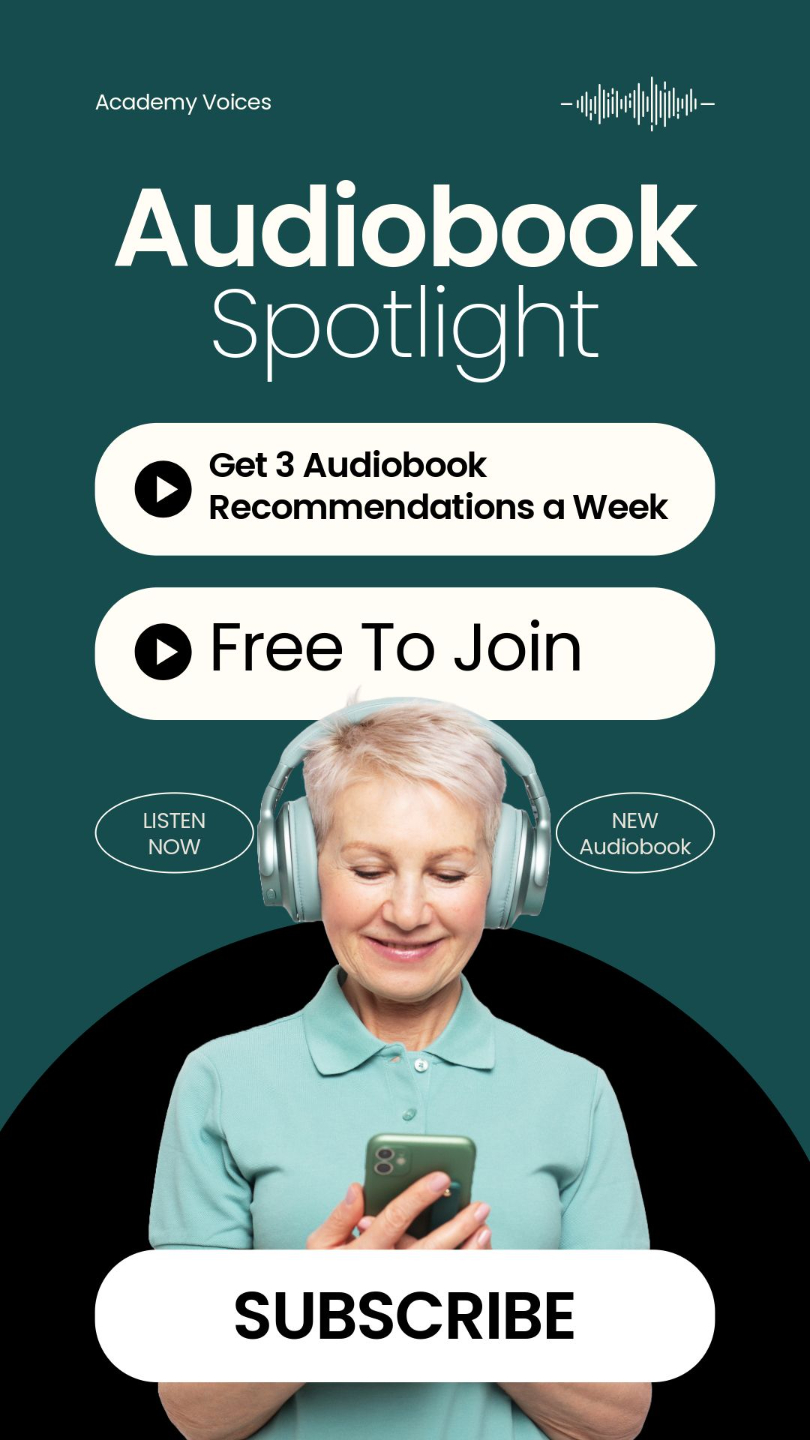7 Narration Styles That You Need To Know For Your Next Project
Apr 05, 2024
Gone are the days when listeners confused Orson Welles’ radio show for a live broadcast about an alien invasion of rural New Jersey. Nowadays, audiobooks are more popular than ever and the market is expected to skyrocket from $4 billion to $32 billion by 2030. For all you know, while you listen to energetic music at the gym your workout partner might be listening to a dramatic reading of their favorite bestseller.
In an era of digital media and streaming platforms, narration remains an indispensable storytelling tool as people listen to audiobooks everywhere they go. Understanding the narration styles at your disposal will enable you to harness their powers of engagement, enhance emotional investment in your content, and reach new audiences.
In this guide, we’ll explore the 7 core styles of narration, which for simplicity we’ve broken into two categories: voicing and casting.
Giving Words A Voice

1. Fully Voiced Reading
In fully voiced readings, each character receives its own distinguishable voice. This can be done by a single narrator using skills of intonation, accents, and mannerisms, and/or by hiring a cast of multiple voice actors. Not only does this make it easy for listeners to tell characters apart, but it also adds depth, complexity, and relatability to the narrative.
Whether done by a single narrator or a larger cast of voice actors, the most important thing is that the narrator is skilled enough to create distinguishable voices that listeners find easy to recognize. Done right, this allows audiences to form emotional connections with the characters and become fully immersed in the story.
In extreme cases, narrators have been known to voice over 100 characters for a single audiobook. One such example is Rob Iglis’s reading of The Lord of the Rings, which has long been beloved by fans thanks to his ability to embody the essence of a father reading fireside bedtime stories—as if Tolkien himself were reading it to his own children.
Other examples:
- "Harry Potter and the Sorcerer's Stone" by J.K. Rowling, narrated by Stephen Fry.
- "The Lord of the Rings" by J.R.R. Tolkien, narrated by Andy Serkis.
2. Partially-Voiced Reading
Partially-voiced reading focuses on making the protagonists easily recognizable while maintaining less pronounced differences between the voices of supporting characters. This style strikes a balance between clarity and immersion, allowing for a nuance of emotions without overwhelming the listener with excessive vocal variation.
One key benefit of a partially-voiced reading is that it doesn’t require voice actors to be chameleons. Not only does this reduce the creative burden on the narrator(s), but it can also minimize the preparation time necessary for a project. So long as the main characters are sufficiently different from each other, subtle shifts in delivery for the supporting characters are enough for even the most discerning listener to walk away a happy camper.
There’s no right answer about whether you should choose a fully-voiced or partially-voiced reading. Andy Weir’s “The Martian” was first recorded by R.C. Bray in a partially voiced style, only to be re-recorded several years later by Wil Wheaton’s in a fully voiced style. And while Wheaton’s edition has been praised, there are still thousands of listeners who prefer R.C. Bray’s version.
Other examples:
- "The Hunger Games" by Suzanne Collins, narrated by Carolyn McCormick with a focus on Katniss's voice.
- "Gone Girl" by Gillian Flynn, narrated by Julia Whelan with a focus on Amy's voice.
3. Unvoiced Reading
Unvoiced readings adopt a more straightforward approach, with the narrator delivering the story without significantly altering their voice for different characters. Whatever unvoiced readings lack in the embellishments of fully-voiced or partially-voiced readings, they make up for by allowing the narrative itself to take center stage, emphasizing the plot and themes without distraction.
Unvoiced reading is the bread and butter of documentary narration. In this genre, it’s all about enhancing the content through emotional authenticity, pacing, and keeping listeners/viewers engaged.
Other times, unvoiced reading is chosen because the author wants their work to be read with a specific rhythm. In these readings, a work of literary fiction can take on the qualities of spoken poetry, such as Toni Morrison’s reading of her novel “Beloved.”
Unvoiced reading is ideal for non-fiction works and narratives that focus on on conveying information and ideas. In “Sapiens: A Brief History of Mankind” by Yuval Noah Harari, narrated by Derek Perkins, listeners are treated to an unvoiced reading that focuses on a clear, engaging delivery. Perkins maintains a consistent tone throughout the audiobook, presenting complex ideas in a concise, compelling manner. Since there are no “characters”, Perkins is free to unfold the narrative seamlessly, helping listeners delve into a fascinating exploration of human history without interruption.
Other examples:
- "Atomic Habits: An Easy & Proven Way to Build Good Habits & Break Bad Ones" by James Clear, narrated by James Clear
- "Quiet: The Power of Introverts in a World That Can't Stop Talking" by Susan Cain, narrated by Kathe Mazur
How Many Narrators Should You Cast

Now that you’ve got a hold of the voicing styles, let’s explore how casting can be used to bring a story to life.
4. Solo Narration
Solo narration is the gold standard for audiobooks, a timeless and straightforward approach where a single narrator performs the entire book or piece, regardless of how many characters there are, as if the listener’s inner monologue is replaced by that of the narrator for the duration of the read.
This style can be fully voiced, partially voiced, or unvoiced. A narrator might choose to make each character distinguishable from the rest or focus on creating a unique voice solely for the protagonist while giving supporting characters less differentiation. Listeners benefit from a consistent voice throughout the narrative, fostering a deep connection between the storyteller and the audience.
As a result, solo narration remains a popular choice for its intimacy and simplicity– from classic novels like Nabokov’s “Lolita,” narrated in Jeremy Irons’s velvety and piercing voice, to contemporary hits like Delia Owens’s “Where the Crawdad Sing,” in which Cassandra Cambell deftly lures listeners into the intrigue of a small-town murder.
Many productions don’t have enough funding to hire a full cast. If budget is your project’s limiting factor, the long-term public appeal of solo narration makes it an appealing option.
Other examples:
- "To Kill a Mockingbird" by Harper Lee, narrated by Sissy Spacek.
- "The Silent Patient" by Alex Michaelides, narrated by Louise Brealey.
5. Dual Narration
Dual narration comes in handy when the listener experiences different chapters or sections of a story from the perspective of two or more different main characters. Here, the key determining factor is the narrative style: whether you have two or even 5 narrators, the important thing is that they each narrate by chapter, rarely if ever interacting with one another.
Most often, this works for stories that focus on the first and second-person points of view of two protagonists (e.g. one male and one female), which makes it a great narration style for, you guessed it, romance novels! But it can also be an excellent tool for stories that we see through the eyes of multiple protagonists throughout the novel–the important thing being for each narrator to handle their respective paragraphs and all the characters therein.
Whether or not you choose to produce using dual narration should depend highly on the narrative. If the narrative focuses more-or-less equally on the POV of two main characters, dual narration may be a good choice.
Examples:
- "Eleanor & Park" by Rainbow Rowell, narrated by Rebecca Lowman and Sunil Malhotra.
- "An Ember in the Ashes" by Sabaa Tahir, narrated by Fiona Hardingham and Steve West.
6. Duet Narration
Duet narration is exactly what it sounds like: a duet between two narrators. Irrespective of the POV, each narrator consistently voices the thoughts and dialogue of their respective characters (regardless of whose point of view we’re viewing them from), fostering authentic exchanges and emotional sincerity between the protagonists.
In Sally Thorne’s contemporary romance novel, “The Hating Game," voice actor Katie Schorr narrates the female protagonist and Teddy Hamilton the male protagonist. Schorr and Hamilton's performances complement each other, creating a captivating and immersive listening experience for fans of the genre, particularly the romantic tension.
Because there are only two actors, duet narration creates a uniquely conversational vibe which can be very appealing to a niche audience. While it isn’t ideal for ensemble stories that require emotional investment in a larger cast of characters, this could be the right choice for you as long as the story revolves around just two core protagonists.
Examples:
- "The Night Circus" by Erin Morgenstern, narrated by Jim Dale and Mandy Williams.
- "Sadie" by Courtney Summers, narrated by Rebecca Soler and Dan Bittner.
7. Full-Cast Narration
Full-cast narration (aka multi-voiced narration) employs multiple narrators to give each character their own voice. This style is perfect for dramatic productions and reduces the creative burden for individual narrators. Not only that, but sparks fly when great stories meet full casts of talented voice actors!
One method for full-cast narration is to have a “narrator” to read anything that isn’t dialogue and voice actors to act out the dialogue of individual characters. In the audiobook edition of Neil Gaiman and Terry Pratchett’s “Good Omens,” there are 14 voice actors and 1 narrator.
Full casts cost more, so they’re produced less often– but that doesn’t mean they’re out of reach. While there are extreme examples of colossal casts like “Lincoln in the Bardo,” in which 166 narrators tell the fantastical story of ghosts as they recall Abraham Lincoln’s grief-stricken visit to the graveyard where his young son has just been laid to rest, not everyone has the resources (or media hype) to hire 100 (let alone 166 ) voice actors for a new audiobook. And that’s ok: many of the top bestselling audiobooks of all time have fewer than 5 narrators.
One great example is Kathryn Stockett’s bestseller “The Help,” where a cast of four voice actors narrate their respective character’s chapters. Similarly, “A Burning” by Megha Majumdar has 5 narrators, each performing the dialogue of various secondary characters throughout their respective sections.
Other examples:
- "Daisy Jones & The Six" by Taylor Jenkins Reid, narrated by Jennifer Beals, Benjamin Bratt, Pablo Schreiber, and Judy Greer.
- "World War Z" by Max Brooks, narrated by a full cast including Alan Alda, Mark Hamill, and Nathan Fillion.
Be ready to blur the line between styles
Sometimes you find a sweet spot for your project that doesn’t seem to perfectly match a specific style. What if the point of view changes from chapter to chapter, but has more than two characters?
Earlier we mentioned “The Help,” narrated by Jenna Lamia, Bahni Turpin, Octavia Spencer, and Cassandra Campbell. This bestseller combines a full cast with, arguably, partial narration. In chapters where listeners experience the story through the eyes of Jenna Lamia’s character Eugenia "Skeeter" Phelan, Jenna performs all of the voices. Likewise, Bahni Turpin, Octavia Spencer, and Cassandra Campbell each perform all of the characters in their respective POV chapters. Each supporting character is given emotions and personality through accents and intonation, but not to the same extent that, say, Andy Serkis differentiates the characters in Lord of the Rings.
Picking the Best Narration Style for Your Project
Now that you know the core styles of narration and can start to see how you can mix and match them with great results, the important thing is to find the right people to realize your vision.
You might start by choosing the style that best aligns with your project's genre, narrative structure, and target audience; alternatively, you might start by choosing a narrator and then finding the style that your story and narrator’s voice are best suited for. Maybe you have a voice actor who’s so good that you don’t see the need to cast anyone else, or maybe you simply know deep down that your story needs multiple voices.
Whatever you choose, one thing is certain: the audiobook is a medium about the connection between narrators and listeners which requires a level of nuance that only the human voice can convey.

Finding a Voice To Make Your Audiobook a Reality
At Academy Voices, our motto is All Human, All The Time. It’s not just about finding a pleasing voice, but about finding the right voice (or voices) for your project: the one(s) with the qualities to carry listeners along on an emotional journey.
Academy Voices is your ally in this creative process and hosts a plethora of options to elevate your audiobook’s narrative. We boast a diverse roster of world-class voice-over artists, each bringing their personal tone and emotional versatility to the table. Whether you’re seeking a voice imbued with warmth and wisdom or an ensemble capable of delivering a fully immersive, dramatic production, Academy Voices is ready to fuse your vision with the ideal voices, all within your budget and timeframe.
Ready to find the right narrator for your audiobook? Get in touch with our team today to connect with the voice you’re looking for.



